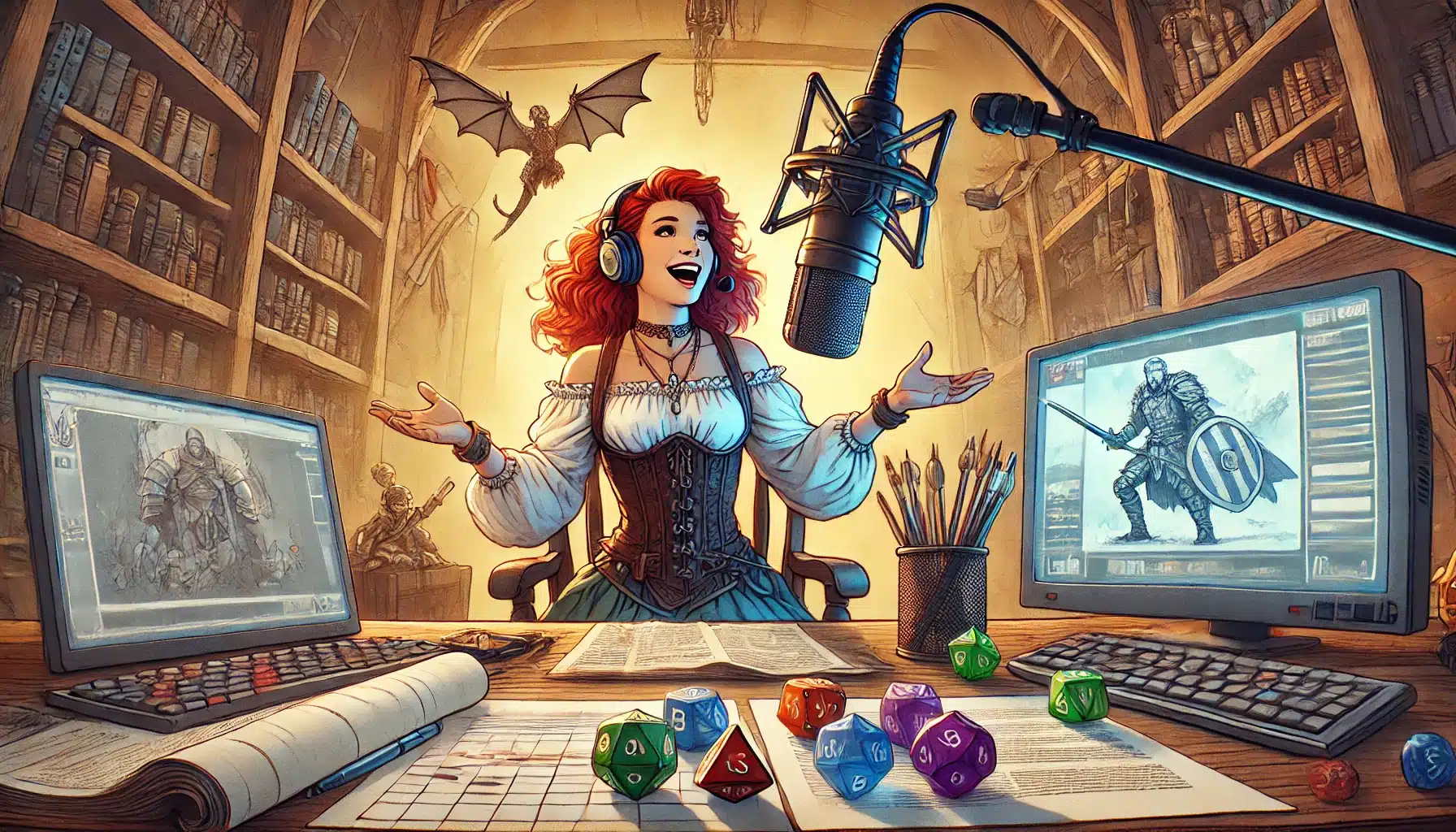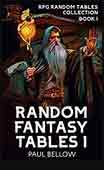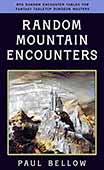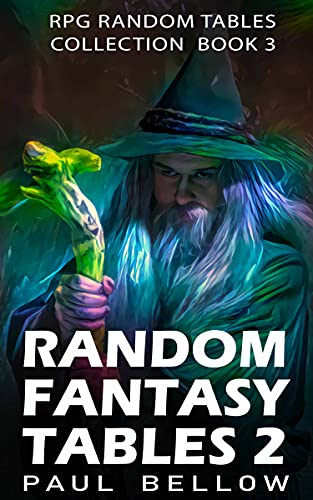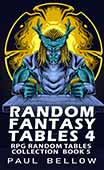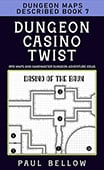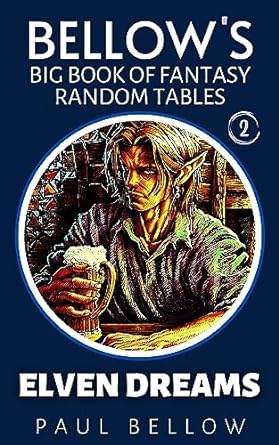There was a time when tabletop role-playing games lived almost entirely behind closed doors. A few friends, some snacks, a beat-up rulebook, and a pile of dice—that was the formula. Stories of warriors, wizards, and rogues played out in living rooms and basements, shared only by those at the table. But that table’s gotten a hell of a lot bigger.
Today, thanks to streaming platforms like Twitch and YouTube, actual play has exploded into something else entirely. TTRPG sessions are now broadcast live, edited into slick episodes, or recorded as audio dramas with near-professional production value. And people are showing up to watch. Not just a handful—millions.
What’s driving it? It’s more than just cool dice rolls and dramatic monologues. It’s connection. It’s performance. It’s the magic that happens when raw, unscripted roleplay meets a live, engaged audience. Suddenly, players aren’t just gamers—they’re storytellers, improvisers, entertainers. And the audience? They’re not just watching. They’re reacting in chat, influencing story beats, and helping shape the direction of campaigns in real time.
This shift has changed the landscape of RPGs. Game design is bending to the format—rules that reward cinematic action, mechanics that encourage collaborative storytelling, and campaigns that cater to both the players and the fans. Publishers are paying attention. Indies are thriving. Entire shows have spun off into comic books, animations, and full-fledged franchises.
It’s also opened the doors wide for new voices. Actual play has become a space where diverse creators and players are finding their spotlight, telling stories that reflect a wider spectrum of experience, identity, and style. It’s messy, it’s experimental, and it’s alive in a way the hobby’s never quite been before.
So yeah, it’s still about friends and dice and wild ideas. But now, it’s also about communities tuning in from around the world. It’s about that feeling when a nat 20 sends a chat into a frenzy, or when a plot twist gets clipped and shared thousands of times. It’s about the blur between player and performer, game and show, hobby and movement.
Try my AI Tabletop RPG generators...and an extensive library of content!
This is actual play. It’s not the future of tabletop—it’s the right now.
The Rise of Actual Play Content
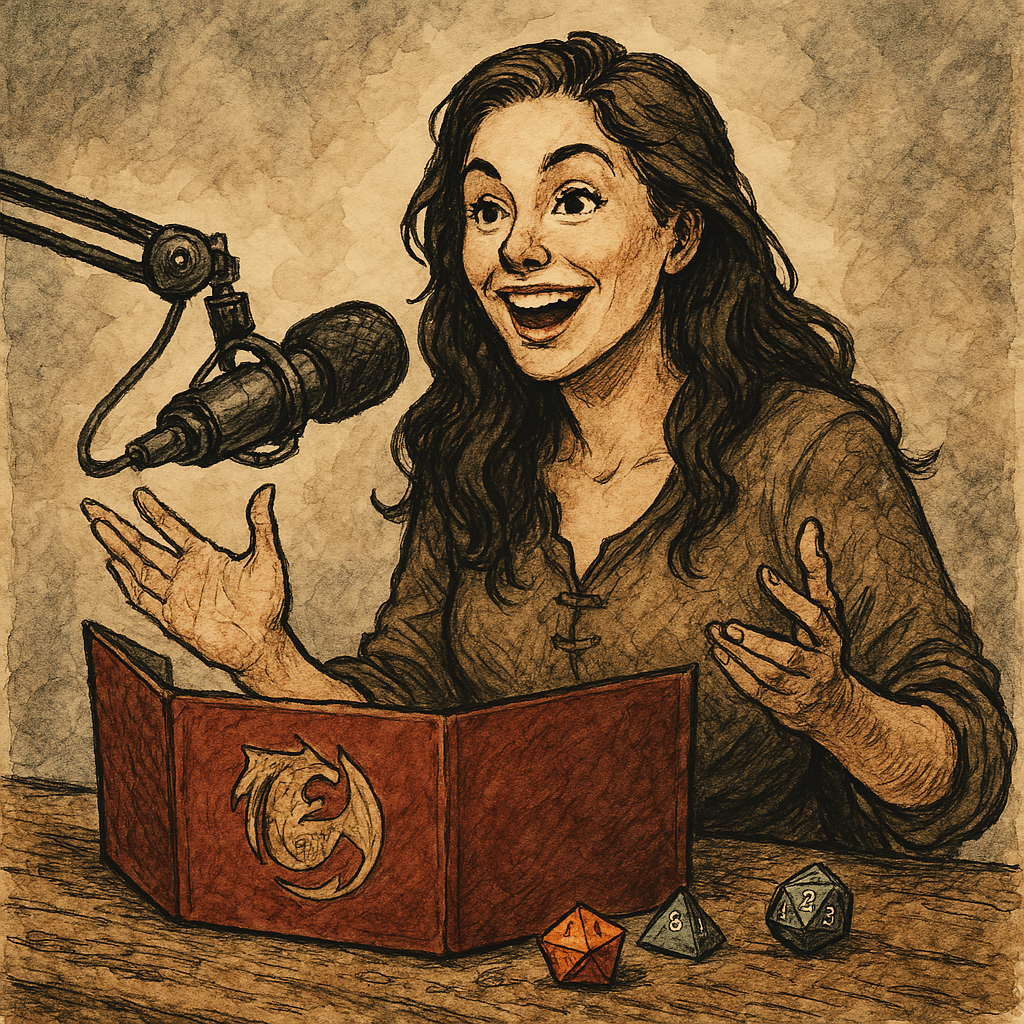
It all began with a whisper in the night—a casual gathering of friends around a table, dice clutched in sweaty palms, eagerly venturing into the unknown realms of the dungeon master’s imagination. Once considered a niche hobby, tabletop role-playing games (RPGs) have soared into the spotlight thanks to the meteoric rise of actual play content. With platforms like Twitch and YouTube offering an accessible stage, these storytelling sessions have transformed into a spectacle watched by millions. Shows like “Critical Role,” “Dimension 20,” and “The Adventure Zone” have led the charge, turning what was once a modest pastime into mainstream entertainment.
Initially, these sessions were akin to amateur theater, raw and uncut, highlighting pure fun and creativity. The early days saw small groups sharing their gameplay via shaky webcams, guided by the singular goal of sharing the joy of RPGs with a wider audience. As viewership grew, so did production values and storytelling aspirations, drawing in viewers who weren’t necessarily players themselves but were captivated by the narratives unfolding before them. This content was no longer just about playing games; it was about creating worlds and telling stories that resonated deeply with audiences.
Fueled by the infectious passion of devoted fans, these shows slowly became cultural phenomena. With charismatic dungeon masters and engaging casts, actual play shows began to attract significant viewership numbers, leading to a shift in how they were produced and consumed. Like a snowball rolling downhill, their popularity picked up pace, breaking barriers that confined tabletop RPGs to the confines of geekdom. Thanks to this exponential growth, actual play has not only found a home online but has also integrated into mainstream culture, popping up in unexpected places far removed from the dungeon maps and polyhedral dice.
What made this transformation possible? The answer lies in the democratizing power of technology. Platforms like Twitch provided a live, interactive space where players and viewers could connect in real-time, while YouTube offered a repository for edited, polished sessions that showcased the best moments. This one-two punch of live and recorded content paved the way for actual play shows to refine their craft, experiment with formats, and reach ever-broadening audiences. The ripple effect reached as far as the RPG industry itself, influencing game design and marketing strategies in unprecedented ways.
⚔️ Fantasy RPG Random Tables Books
Make life as a Gamemaster easier…
If you play Dungeons & Dragons, Pathfinder, or other fantasy RPGs, this
RPG random tables series
is packed with encounters, NPCs, treasure, and more. Available in eBook or print—either way, you’ll have a wealth of adventure ideas at your fingertips.
As the curtains rise on this new era of shared storytelling, the journey from basement hobby to broadcast marvel stands as a testament to the enduring allure of human imagination. This eruption into mainstream consciousness didn’t just happen by chance; it was carefully constructed on a foundation of creativity, community, and the intrinsic human love for storytelling. It’s impossible to ignore the impact and potential of actual play content as it continues to redefine entertainment, community engagement, and creative collaboration on a grand scale.
Key Milestones in the Actual Play Boom
The evolution of actual play content has been marked by a series of pivotal moments, each turning point contributing to the next phase of growth for this cultural phenomenon. One of the earliest watershed events was Critical Role’s transition from an informal home game to a full-fledged web series. What started as a casual game among friends quickly metamorphosed into an intricately produced show that captured the imaginations of both players and audiences alike.
Another significant moment was the record-breaking Kickstarter campaign by Critical Role for its animated series, “The Legend of Vox Machina.” This campaign set a new standard for crowdfunding in the geek entertainment sector, demonstrating the massive fan support and potential financial viability of actual play content. Within days, it surpassed all expectations and garnered millions in pledges, shining a spotlight on the power of community funding for creative projects.
Platform partnerships have also played a crucial role in this expansion. For instance, when Dimension 20 struck a deal with CollegeHumor’s streaming service Dropout, it signaled a willingness by larger media entities to embrace and invest in this burgeoning genre. Such alliances have broadened the reach of actual play and ensured that these unique formats continue to thrive in a competitive digital landscape.
Finally, we can’t overlook the impact of cross-media deals and emerging technologies, which further blurred the lines between gaming and storytelling. The eventual crossover into graphic novels, video games, and animated series has shown that these tales told around a table have an appeal that transcends their original format, creating endless possibilities for narrative expansion and audience engagement.
- Critical Role transitions to a web series.
- Critical Role’s “The Legend of Vox Machina” animated series Kickstarter.
- Dimension 20’s partnership with Dropout.
- Critical Role breaks Twitch viewership records.
- Fans of actual play content create dedicated online communities and forums.
- Inclusion of professional actors and voiceover artists in actual play shows.
- The Adventure Zone releases its graphic novel adaptation.
- Launch of the “D&D Live” events featuring live actual play performances.
- The creation of unique campaign settings that become integral to game lore.
- The massive success of the “Acquisitions Incorporated” franchise.
- Twitch’s decision to launch and promote dedicated RPG categories.
- Introduction of interactive audience participation tools on streaming platforms.
- Dimension 20’s foray into short-format actual play content.
- The rise of actual play-specific conventions and live tours.
- Critical Role’s transformation into a multi-platform media company.
These milestones illustrate the significant strides made by actual play content in reshaping the landscape of both tabletop RPGs and digital entertainment. What was once an underground movement is now a thriving community with the power to influence and innovate within the industry. From record-breaking fundraisers to cross-platform adaptations, the potential for these shows has never been greater.
To wrap up, the history of actual play content is rich with transformative moments, each adding a layer to its cultural tapestry. It’s a tale of grassroots creativity meeting digital innovation, a partnership that has allowed diverse voices to craft compelling stories for eager audiences. As the influence of actual play continues to expand, the community’s spirit of collaboration and imagination ensures that the journey is far from over.
How Livestreaming Changed the Tabletop Game
Picture this: a group of friends gather around a table, dice in hand, scribbling notes on character sheets, and lost in the collective tale they weave. Now add cameras, lighting, interaction, and you’ve transitioned into the realm of livestreamed actual play. The shift from private to public gameplay has fundamentally altered the landscape of tabletop RPGs, turning what was once an intimate experience into a grand performance.
As these interactive stories unfolded live before an audience, narrative presentation and pacing evolved drastically. Players began to consider not just the game mechanics but also how their actions played out for the viewers. This added a layer of theatrical drama to the sessions, with character arcs often becoming more intricate and focused. A simple dungeon crawl morphed into a serialized saga, interspersed with cliffhangers and plot twists designed to keep audiences coming back for more.
Production values surged as creators strived to offer a polished viewing experience. Elaborate sets, costumes, and custom graphics became commonplace, creating a fusion of traditional gameplay and visual storytelling. These enhancements elevated the experience, drawing viewers in as much for the spectacle as for the story itself. Additionally, the interactive nature of livestreams allowed audiences to influence the narrative in real-time, often contributing ideas, items, or even plot disruptions, making them an integral part of the storytelling process.
The impact of this evolution is clear when we compare the structure, tone, and audience interactions across different formats of tabletop RPG gaming. Traditional home games prioritize player experience and personal enjoyment, with minimal regard for audience perception. Livestreamed games focus on dynamic storytelling, offering a blend of spontaneity and performance, while edited/produced content aims to deliver a cinematic experience with tight narrative cohesion.
⚔️ Fantasy RPG Random Tables Books
Make life as a Gamemaster easier…
If you play Dungeons & Dragons, Pathfinder, or other fantasy RPGs, this
RPG random tables series
is packed with encounters, NPCs, treasure, and more. Available in eBook or print—either way, you’ll have a wealth of adventure ideas at your fingertips.
| Traditional Home Games | Livestreamed Games | Edited/Produced Content |
|---|---|---|
| Emphasis on player enjoyment | Blend of spontaneity and performance for audience | Cinematic experience with tight narrative cohesion |
| Casual and private atmosphere | Public and interactive environment | Polished and curated presentation |
| Focus on player-driven storylines | Audience interaction influences plot | Pre-determined narrative arcs with editing |
| Flexible pacing and gameplay | Real-time narrative progression | Controlled pacing through editing |
| Minimal production elements | Moderate production enhancements | High production values and post-production |
| Closed group interaction | Open community engagement | Audience engagement through comments/reactions |
| Character development in real-time | Enhanced character arcs for drama | Edited for focused character progression |
| No time constraints or broadcasting limits | Session length dictated by platform | Episodes edited to optimal length |
| Personal improvisation | Emphasis on dramatic moments | Balances improvisation with scripted elements |
| Little to no outside distractions | Audience feedback can alter gameplay | Viewer feedback may shape story decisions |
| Private or limited social impact | Broad social engagement and influence | Influences broader fan and gaming communities |
These changes reveal how livestreaming has redefined RPG gameplay, making it an experience meant to be shared, performed, and celebrated. Performance now plays a significant role alongside traditional gameplay elements, attracting a wide array of viewers who come for the characters, stay for the story, and participate in real-time.
In conclusion, the shift to livestreaming has undeniably enriched the RPG world, ushering in new storytelling techniques and audience interactions. It has transformed the RPG experience from a niche hobby into a vibrant entertainment form, showcasing the potential of RPGs to entertain and engage globally. As actual play content continues to evolve, it promises not only to entertain but to innovate further, challenging creators to push the boundaries of storytelling in unimaginable ways.
From Players to Performers: RPG Celebrities
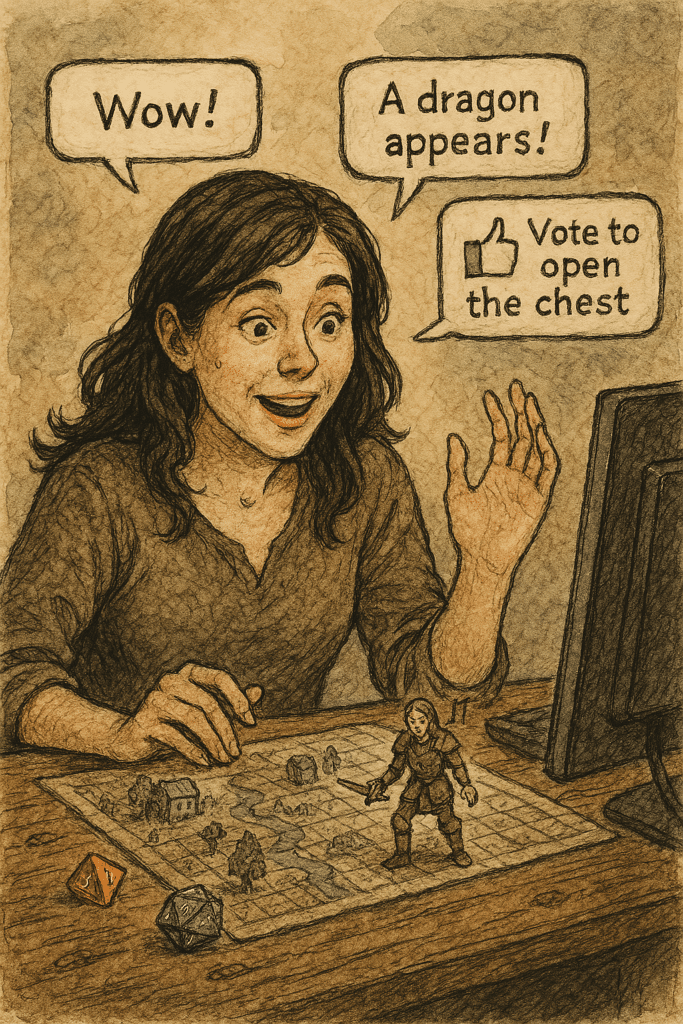
Who would have thought that rolling dice and telling tales of adventure could turn one into an internet luminary? Yet, here we are, witnessing the rise of a new breed of influencer: the RPG celebrity. Figures like Matt Mercer, Brennan Lee Mulligan, and Aabria Iyengar have captured the hearts and imaginations of audiences worldwide. These individuals have transcended their roles as mere players to become celebrated figures, whose personas and narratives are followed with fervent devotion.
Take Matt Mercer, the much-celebrated Dungeon Master of “Critical Role.” His ability to weave intricate narratives and breathe life into characters has garnered him an almost cult-like following. Mercer’s influence extends beyond the table; his voice acting career, public engagements, and even advice on GMing have inspired thousands to pick up their own DM screens. Similarly, Brennan Lee Mulligan’s quick wit and engaging storytelling with Dimension 20 have attracted audiences who appreciate his ability to blend humor with heart. Aabria Iyengar, with her fresh perspectives and dynamic style, has become a sought-after voice in the RPG community, championing diverse narratives and inclusivity in storytelling.
The rise to fame for these dungeon masters and players hasn’t just elevated their profiles—it has also profoundly impacted the RPG community. As more people tune into these streams, performers have the power to shape gaming culture, inspiring new fans and content creators alike. Their influence extends to conventions, book deals, and merchandise lines, reflecting the vast reach of their storytelling prowess.
Seeing these players evolve into cultural icons is heartening. It highlights a symbiotic relationship between creators and viewers. Audiences are not merely spectators but active participants in the actual play phenomena, contributing time, creativity, and resources to the community. This newfound fame and influence ensure that actual play shows have a lasting impact on both the RPG world and broader entertainment landscape.
As we conclude this exploration of RPG celebrities, it’s clear that actual play content is more than just stories told with dice—it’s a shared journey driven by community and creativity. These performers have expanded the possibilities of what RPGs can be, showing there’s a place in this world for everyone to tell their tale. Whether you’re rolling dice in a basement or watching from the other side of a screen, the spirit of creativity and collaboration remains at the heart of actual play’s incredible growth.
Try my AI Tabletop RPG generators...and an extensive library of content!
Impact on RPG Design and Publishing
In the swirling nexus of dice rolls and narrative arcs, a fascinating feedback loop has been born, redefining how RPGs are designed and published. Actual play content acts as both a laboratory and a showcase for RPG creators, where gameplay informs design, and design inspires performance. This synergy is driving publishers to innovate and adapt, ensuring their products resonate not only with players gathered around a table but also with audiences mesmerized by livestreamed adventures.
The presence of cameras and audiences has necessitated a shift in how games are designed, focusing on spectacle, dramatic beats, and accessibility. Publishers are now crafting rule sets, settings, and campaigns that cater to this audience-centric model, emphasizing moments of high drama and emotional engagement. As creators test new ideas in real-time, they receive immediate feedback, inspiring a rapid iteration process that is continually refining and enhancing the RPG experience.
Moreover, actual play content serves as a powerful marketing engine for publishers. Shows showcasing new systems and modules often become the primary sources through which audiences discover and fall in love with fresh gaming content. The exposure from these productions can elevate a system from obscurity to the top of bestseller lists almost overnight.
As actual play continues to influence and shape RPG design and publishing, the boundary between play and performance blurs further. Innovations born out of streamed sessions are making their way into product lines, enhancing the richness and replayability of games. In this brave new world of RPGs, the interaction between actual play and creators is crafting a shared narrative space, where the roles of player, viewer, and designer intertwine in a seamless dance.
Designing for the Camera
In today’s RPG landscape, the demand for streamable content has profoundly impacted game design philosophies. Designers are now tailoring games to the needs of both players and audiences, focusing on creating immersive experiences that translate well on-screen. This evolution reflects a noteworthy shift from traditional mechanics to a more narrative-driven style, where the very structure of RPGs becomes akin to writing a play or producing a drama.
The emphasis is now on creating rule sets that facilitate dynamic storytelling, with mechanics that encourage character development and narrative surprises. Scene-based mechanics, for example, allow players to quickly switch between different settings and scenarios, maintaining the audience’s attention. Emotional resolution tools enable characters to grow meaningfully, offering cathartic moments that resonate deeply with viewers. And session summaries or “recaps” help audiences keep track of complex storylines, especially when stories unfold over months or even years.
Publishers are also paying close attention to visual and auditory elements, adding layers to the traditional game experience. Props, visual aids, and atmospheric soundtracks are no longer merely optional but can be integral parts of the session, designed to captivate an audience with every turn of the page or scene change.
It’s not just about mechanics, though; the narrative hooks and dramatic beats are essential for maintaining engagement. Designers are learning to craft systems that incorporate built-in moments of tension and drama, ensuring that each session provides the peaks and valleys that keep viewers invested and returning for more adventure.
- Scene-based mechanics facilitate engaging storytelling transitions.
- Emotional resolution tools encourage character arcs.
- Session summaries and recaps for maintaining viewer continuity.
- Built-in dramatic beats for consistent narrative tension.
- Visual aids and props to enhance storytelling.
- Crafting atmospheric soundtracks that guide emotional tone.
- Using modular design for flexible story arcs.
- Designing narrative hooks to draw audiences immediately.
- Gameplay elements tailored for episodic content.
- Incorporating interactive audience feedback mechanisms.
- Developing quick “rule of cool” moments for gaming highlights.
- Structuring sessions akin to serialized television episodes.
By designing with these elements in mind, creators are crafting experiences that are just as compelling to watch as they are to play. It’s a revolution in game design that acknowledges the dual audience of players and viewers, making RPGs more accessible to a broader demographic.
In essence, designing for the camera has pushed creators to innovate in exciting ways, opening new avenues for storytelling and audience engagement. By embracing this change, the RPG industry is carving out a future where creativity and interactivity flourish, expanding the horizons of what’s possible in both RPG design and performance.
Actual Play as a Marketing Engine
If there’s one lesson the rise of actual play content has taught us, it’s the power of visibility. These shows have become more than entertainment—they’re a compelling marketing tool, driving awareness and sales for RPG systems and modules. By capturing the imaginations of thousands (and sometimes millions), actual play content can propel new games into the spotlight, creating a buzz that traditional marketing campaigns could hardly dream of matching.
This phenomenon is best exemplified by the successes of games and settings catapulted into popularity through actual play exposure. Titles that once languished in niche obscurity have found fresh life thanks to high-profile playthroughs by popular streams. The visibility actual play content offers is invaluable, providing a platform for new games to reach audiences far beyond their traditional niches.
For instance, when a renowned actual play group showcases a new system, they often highlight its unique mechanics and storytelling potential. This exposure not only reaches established RPG enthusiasts but also attracts curious new players drawn by the entertaining narratives and personalities involved. As a result, actual play content becomes a critical touchpoint in driving interest and sales, sometimes even before official releases hit the market.
Interestingly, actual play content often serves as a crucial testing ground for these new games. Creators can witness real-time reactions from players and audiences, gaining insights into what aspects of their game resonate or fall flat. This feedback loop enables designers to make adjustments and improvements, refining products before broader distribution. It’s a dynamic process that aligns marketing with genuine community engagement, blurring the line between promotion and collaboration.
| Game/Setting Boosted | Players Involved | Viewer Reach | Sales Impact |
|---|---|---|---|
| “Monster of the Week” | The Adventure Zone | 2 million+ | 500% increase in sales |
| “Blades in the Dark” | Critical Role | 3.5 million+ | Bestseller on DriveThruRPG |
| “Numenera” | Geek & Sundry’s Relics and Rarities | 1.2 million+ | Significant increase in corebook sales |
| “Tales from the Loop” | Dimension 20 | 800,000+ | Core game sells out initial print run |
| “Kids on Bikes” | High Rollers | 1 million+ | Expansion sales soar after stream |
| “13th Age” | Acquisitions Incorporated | 2.5 million+ | Surpassed previous sales benchmarks |
| “Stars Without Number” | HyperRPG’s Pirates of Leviathan | 1 million+ | Core rules climb charts |
| “Thirsty Sword Lesbians” | Three Black Halflings | 500,000+ | Game garners award nominations |
| “Call of Cthulhu” | The Glass Cannon Podcast | 2 million+ | Revival in popularity and new supplements sold |
| “Alien RPG” | Reckless Attack | 750,000+ | Substantial increase in adventure module sales |
| “Overlight” | Girls Guts Glory | 1 million+ | New interest spikes translation into multiple languages |
| “Mörk Borg” | Dungeons & Doodlers | 500,000+ | Increase in independent store demand |
| “Vampire: The Masquerade” | L.A. by Night | 1.5 million+ | Revitalization of World of Darkness products |
| “Lancer” | Riddle & Ravens | 900,000+ | Surge in digital and hard copy sales |
| “Ironsworn” | Dicebreaker Live | 1 million+ | Notable uptick in community-driven content sales |
The above examples showcase how actual play content has become an indispensable part of the RPG marketing landscape. By elevating games into the public eye, these shows provide the kind of authentic, engaging promotion that traditional methods struggle to replicate. This influence echoes throughout the industry, paving the way for innovative marketing strategies that pair entertainment with exposure.
To wrap up, actual play content is proving to be more than just a passing fad. It’s a powerful ally for publishers eager to make their mark, combining storytelling with strategy to create unparalleled excitement and demand. As the digital age progresses, the line between marketing and playing continues to blur, promising even greater integration and collaborations between creators, performers, and audiences.
⚔️ Fantasy RPG Random Tables Books
Make life as a Gamemaster easier…
If you play Dungeons & Dragons, Pathfinder, or other fantasy RPGs, this
RPG random tables series
is packed with encounters, NPCs, treasure, and more. Available in eBook or print—either way, you’ll have a wealth of adventure ideas at your fingertips.
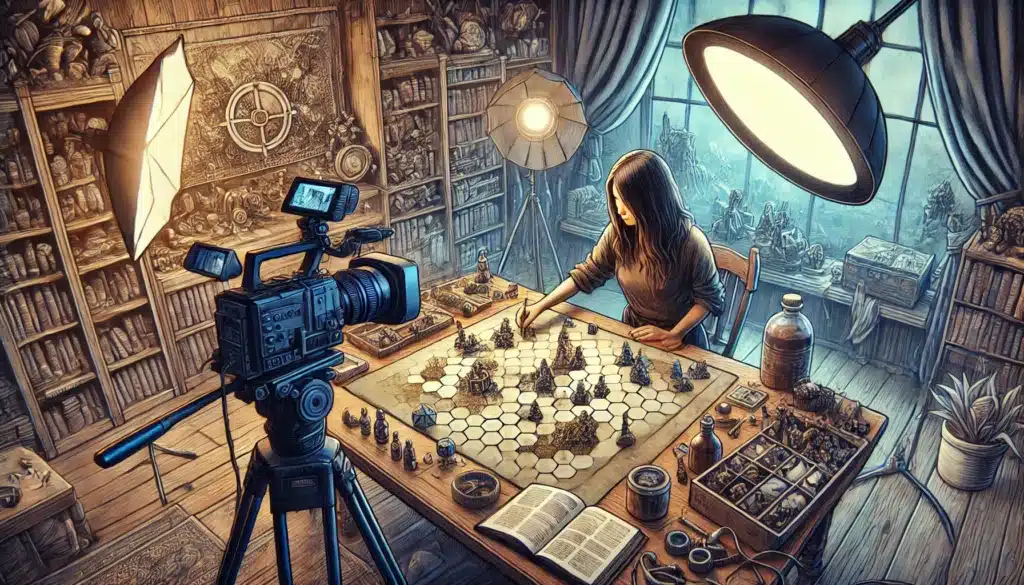
Collaborations Between Publishers and Performers
The synergy between RPG publishers and actual play creators has blossomed into a dynamic partnership that continues to redefine the industry. As actual play popularity soared, publishers swiftly recognized the value of collaborating with these performers to bring their products to life in compelling new ways. The outcome? A wave of innovative content that merges the talents of creators and performers in unprecedented ways.
These collaborations take many forms, from commissioned campaigns tailored for specific actual play shows, to performers gaining early access to rulebooks and resources. Such partnerships have resulted in co-branded releases, where published adventures originate from streamed campaigns, blurring the line between play and publication. For instance, Critical Role’s Tal’Dorei Campaign Setting, once a streamed world, became a widely celebrated sourcebook thanks to its rich lore and fan demand.
Partnerships often lead to the development of new canonical materials or expansions, enhancing the depth and appeal of existing universes. Through collaboration, creators can inject fresh perspectives and creativity into game design, challenging traditional norms and sparking fresh ideas. These partnerships enrich both the act of playing the games and the iterative dynamism of RPG development.
- Critical Role’s Tal’Dorei Campaign Setting.
- Dimension 20’s use of D&D Beyond for rules integration.
- The launch of “The Adventure Zone” board game.
- Acquisitions Incorporated’s integration into official D&D modules.
- “Rivals of Waterdeep” collaboration with Wizards of the Coast.
- Official “Vox Machina” comics derived from Critical Role campaigns.
- Matt Mercer’s collaboration with Wizards of the Coast for game mechanics.
- The “Call of Cthulhu” supplements inspired by The Glass Cannon Podcast.
- Partnerships with artists and writers to expand game settings.
- Live playthroughs at public events for game testing, leading to refined products.
These examples highlight how actual play performers have become invaluable partners in enriching and expanding the RPG narrative landscape. Their imaginative storytelling nourishes the creative process, while their audience reach introduces games to entirely new demographics. By joining forces, publishers and performers create ecosystems of content that offer both entertainment and inspiration.
In closing, collaborations between publishers and performers signify a new chapter in RPG history, driven by cooperation and creativity. As the boundary between game designers and entertainers blurs, this symbiotic relationship promises not only compelling content but also a continually evolving industry where story and play intertwine. Together, they’re crafting a future where every roll of the dice echoes across media, reaching players and storytellers far and wide.
Viewer Experience and Fan Communities
In the world of actual play content, viewers are more than passive consumers—they are integral to the vibrant tapestry of the RPG experience. This intersection of storytelling and audience participation has led to an extraordinary evolution in how RPGs are created and consumed. Not only do fans watch and enjoy these adventures, they engage on a deeper level, contributing art, theories, and entire community-built projects that push the boundaries of shared storytelling.
The dynamic synergy between creators and audiences has fostered active fan communities that stretch far beyond the games themselves. These communities thrive in online forums, social media groups, and dedicated fan sites, acting as incubators for creativity and discussion. Here, fans dissect episodes, theorize outcomes, and craft their own continuations of beloved narratives. It’s a vibrant ecosystem where the boundaries between viewer and creator blur, resulting in an immersive shared experience.
Fan art is one of the most visible manifestations of this engagement. Artists across the globe bring their interpretations to life, crafting illustrations that enrich the worlds of actual play campaigns. These visual tributes often capture pivotal scenes or character nuances, adding texture to the narrative fabric and offering fellow fans alternative ways to engage with their favorite stories.
Beyond art, fans participate by crafting theories and alternative narratives. These explorations are not merely imaginative exercises—they form a bedrock of community interaction, where fans exchange ideas, debate plot twists, and speculate upon future developments. Additionally, fan-driven projects, such as community-built supplements and fanfic, provide players with new content and fresh interpretations of existing worlds, continually expanding the scope of what these stories represent.
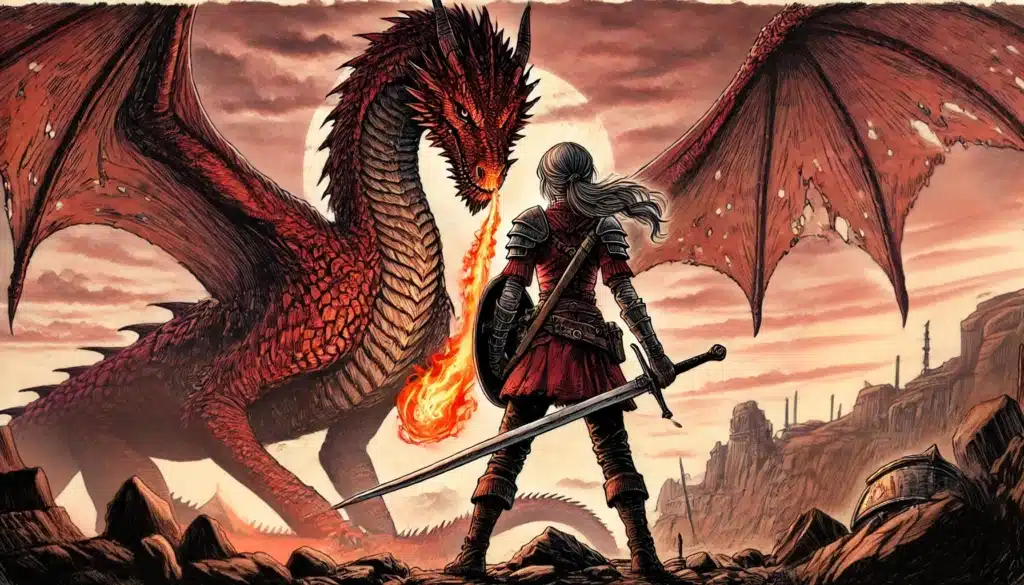
Parasocial Play and Emotional Investment
The emergence of actual play content has given rise to a unique phenomenon: parasocial relationships, where viewers form deep emotional connections with fictional characters and narratives. As audiences watch these stories unfold, they invest in the fates and fortunes of the characters, often feeling as though they are part of the adventure themselves. This bond can influence how viewers perceive and engage with tabletop games, reshaping expectations for players and content creators alike.
For many, watching their favorite characters makes them feel part of something greater—a virtual fellowship. They live vicariously through the characters’ triumphs and failures, experiencing the thrills and despair of the dice alongside them. This sense of identification and belonging is potent, inspiring intense emotional reactions to major story beats and character developments.
As a result, the intensity of these parasocial dynamics often spills over into real-world actions. Fans rally around the narratives they adore, participating in community events, charity fundraisers, and even creating tribute content dedicated to these worlds. Their devotion drives them to support causes promoted by their favorite shows, highlighting how parasocial relationships can translate into tangible social impact.
- Charity fundraisers and events inspired by in-show causes.
- Swaying public opinion and advocacy through popular character arcs.
- Intense fan discussions and theories on dedicated forums.
- Creation and distribution of fan playlists featuring campaign soundtracks.
- Collaborative fan projects to expand on show lore and mechanics.
- Shipping wars driven by character relationships.
- Developing fan games or mods influenced by favorite actual play series.
- Organizing meetups and conventions around shared fandoms.
- Supportive fan networks aiding performers and other viewers.
- Generating tribute content such as videos and podcasts.
- Launching social media campaigns to promote show-related causes.
- Supporting crowdfunding efforts for spin-offs or expansions.
- Detailing character appearances, lore, and timelines in wikis.
- Launching unofficial merchandise lines inspired by the shows.
The emotional investment in these narratives also sets new expectations for home games and content creators. Players aspire to recreate the dramatic depth and character-driven stories they witness on screen, infusing their personal games with the same emotional highs and stakes. As for creators, they face the challenge of navigating these passionate fan expectations while maintaining the authenticity of their storytelling.
Try my AI Tabletop RPG generators...and an extensive library of content!
In essence, parasocial play has reshaped the landscape of both RPG fandom and content creation. As viewers forge deep connections with their favorite stories, they enrich the RPG community in countless ways, contributing love, creativity, and passion. These interactions ensure that actual play content remains a thriving, dynamic force—an emotional journey shared by many, bonding players and fans alike.
Fan Contributions and Worldbuilding
The rich and expansive worlds of actual play campaigns are built not only by the creators but also by the fans. These devoted enthusiasts contribute significantly to worldbuilding, crafting art, lore, and mechanics that both celebrate and expand upon the original stories. This collaborative atmosphere breathes new life into the narratives, making them even more immersive and compelling.
Fan art continues to be a powerful expression of engagement, capturing moments that resonate with viewers and adding layers of visual storytelling to the narrative fabric. Beyond illustrating characters and scenes, these artworks often explore emotional subtexts and alternate interpretations, offering new angles to the story.
Lore creation is another area where fan contributions shine. Fans dedicate time and effort to compiling encyclopedic wikis, documenting character arcs, storylines, and even creating timelines that capture the intricate details of the campaigns. These resources become invaluable to both new and established fans, serving as guides and references for deeper story exploration.
Moreover, some fans venture into designing new mechanics or tweaking existing ones to suit particular narratives or character arcs. This creativity often results in community-built supplements that provide additional gameplay options, new character classes, or unique items. As these fan-created contributions gain traction, they’re sometimes incorporated into the canon, enriching the lore and mechanics with genuine fan influence.
| Fan Work Type | Community Impact | Incorporated into Canon? |
|---|---|---|
| Character Illustrations | Visual storytelling and scene reinterpretation | Frequently showcased or recognized |
| Lore Wikis | Comprehensive resource for fans and new players | Often referenced in future campaigns |
| Fan Soundtracks | Enhances emotional and atmospheric experience | Occasionally adopted by creators |
| Homebrew Mechanics | Expands gameplay possibilities | Adapted or inspired new official content |
| Cosplay Photography | Immersive fan engagement and community building | Celebrated at conventions and events |
| Themed Recipes | Interactive fan participation | Featured in show-endorsed recipe books |
| Published Fanfic | Expands character backgrounds or alternate arcs | Acknowledged in community spotlights |
| Virtual Tabletop Mods | Enhances digital play experience | Sometimes influence official digital tools |
| Animated Tributes | Celebrates key scenes and character moments | Highlighted in fan communities |
| Short Stories | Deepens narrative lore | Rarely incorporated but acknowledged |
| Comic Adaptations | Provides new narrative formats | Celebrated in fan circles |
| Community Art Books | Collaboratively published by fans | Endorsed as unofficial project supports |
| Podcast Discussions | Offers analysis and critique of episodes | Sometimes influence show discussions |
| Charity Projects | Channels fan enthusiasm for social causes | Frequently endorsed or supported |
| Themed Live Shows | Expands fan experiences beyond traditional media | Occasionally featured at conventions |
The dynamic interaction between creators and fans fosters a community spirit that thrives on creativity and collaboration. Fan contributions add depth, variety, and vibrancy to the worlds of actual play, ensuring these universes continue to evolve, adapt, and grow, much like the communities that support them.
In closing, the collaborative efforts of fans in worldbuilding and content creation demonstrate the power of shared creativity. Together, fans and creators build worlds that captivate, entertain, and inspire, forging bonds that transcend the boundaries of fiction and reality. Their collective passion enriches the RPG experience, reminding us that storytelling is an ever-evolving art, fueled by the imaginations of many.
The Role of Patreon, Merch, and Monetization
Behind the curtain of captivating stories and compelling performances lies the reality of sustaining actual play content as a viable career. As the popularity of these shows grows, so does the need for diverse monetization strategies that provide the necessary financial support for creators and their teams. Crowdfunding, merchandise, and exclusive content are just a few avenues that have emerged, transforming part-time endeavors into full-time careers.
⚔️ Fantasy RPG Random Tables Books
Make life as a Gamemaster easier…
If you play Dungeons & Dragons, Pathfinder, or other fantasy RPGs, this
RPG random tables series
is packed with encounters, NPCs, treasure, and more. Available in eBook or print—either way, you’ll have a wealth of adventure ideas at your fingertips.
One of the most impactful platforms for actual play monetization is Patreon. Creators can engage directly with their audience, offering tiered memberships that provide exclusive content, such as behind-the-scenes insights, bonus episodes, and early access to new releases. This model allows fans to support their favorite creators while receiving unique rewards, creating a symbiotic relationship that sustains content production.
Merchandising has also proven to be a lucrative and creative outlet. From clothing lines and custom dice to art prints and themed accessories, merchandise not only generates revenue but also strengthens fan connection to the content. These tangible items become symbols of community belonging and fandom pride, often featuring inside jokes or iconic moments from the campaigns.
Live shows and tours expand the experience beyond screens, offering fans the chance to witness performances in person. Such events strengthen community ties and intensify the emotional impact of storytelling. Special edition releases, like limited-run figures or collector’s books, offer additional avenues for monetization, appealing to collectors and devoted fans alike.
- Patreon memberships for early access and bonus content.
- Crowdfunding campaigns for new series or spin-offs.
- Merchandise lines featuring apparel, collectibles, and accessories.
- Live tours and performances for in-person audience engagement.
- Special edition releases and collector’s items.
- Licensing deals for official game tie-ins and products.
- Exclusive episodes or series available through subscription services.
- Sponsorship deals and product placements within shows.
- Hosted workshops or seminars on game design and storytelling.
- Revenue from digital streaming platforms.
- Community-driven fundraising events for specific projects.
- Advertising revenue from YouTube and other video platforms.
- Syndication of content across additional platforms.
- Collaboration deals with established brands or franchises.
- Offering themed gaming supplements or core books.
In conclusion, the monetization strategies employed by actual play creators underscore the incredible potential of turning a passion for RPGs into a sustainable career. By leveraging diverse revenue streams, creators gain the freedom to innovate, experiment, and expand their content, ensuring that these stories continue to thrive in creative and captivating ways. It’s a testament to the power of audience support, enabling storytellers to do what they love while sharing their passion with the world.
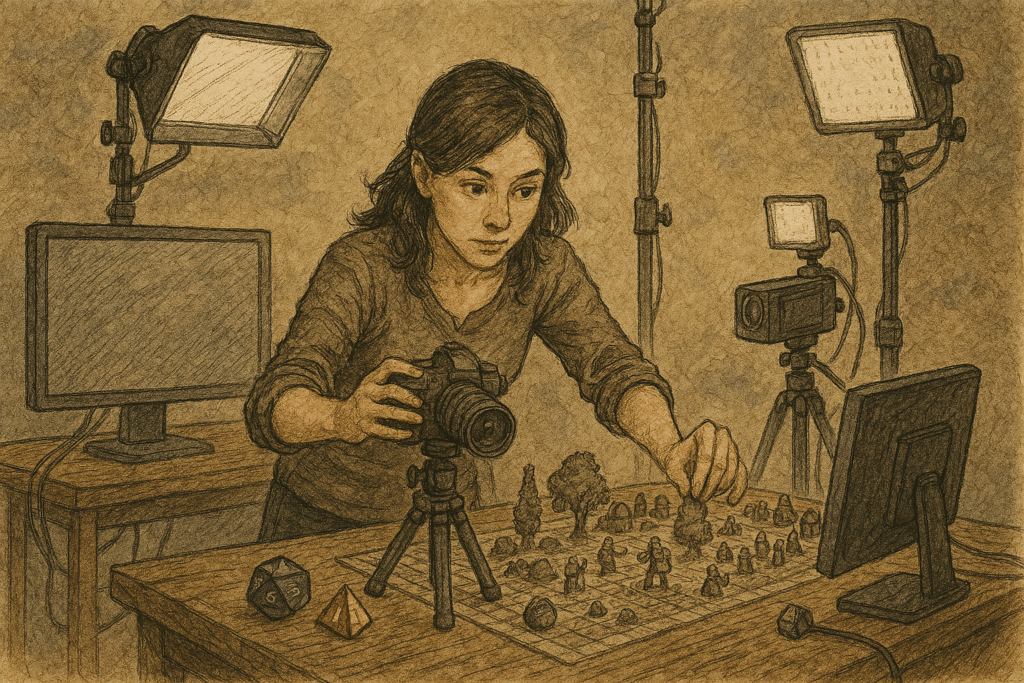
Challenges and Controversies in the Actual Play Space
With any burgeoning creative frontier comes its share of growing pains. The actual play space, for all its innovation and community-building, is no exception. As its popularity has surged, so too have the challenges and controversies that accompany the pressures of expanded visibility and commercial success. Ethical debates, creator burnout, and audience entitlement have emerged as pressing issues that actual play creators must navigate to maintain the delicate balance between authenticity and entertainment.
The stakes are higher now, with larger audiences and greater financial investment creating new demands. This visibility brings both opportunities and challenges, as creators wrestle with maintaining their creative integrity while meeting audience expectations and commercial aspirations. The pressure to deliver consistently engaging content can lead to creator burnout, as the demands of performance and production weigh heavily on those involved.
Audience entitlement is another contentious issue, as fans feel an ownership over the narratives they love and demand greater influence over story directions. Coupled with the immediacy of online feedback, this can create a volatile environment where creators face intense criticism or adoration, often in equal measure. Balancing these dynamics requires finesse and resilience, with creators striving to uphold a vision that is both true to the narrative and respectful of their audience.
As the actual play community grapples with these growing pains, the path forward lies in open dialogue and collaborative engagement. By addressing these challenges head-on, creators and audiences alike can work towards an environment that fosters creativity, inclusivity, and a shared appreciation for the stories being told.
Authenticity vs. Performance
At the heart of the actual play phenomenon lies a fundamental tension between authenticity and performance. As the genre evolves, creators face the challenge of balancing the organic nature of role-playing games with the demands of entertainment. How does the need for drama and engagement influence in-game decisions and character arcs? This is a question that creators must navigate, often in real-time, as they strive to deliver satisfying narratives while remaining true to the spontaneous spirit of RPGs.
The very presence of an audience alters the dynamics at the table, turning private games into public performances. Players may feel the pressure to amplify their characters’ traits or engineer dramatic moments to maintain viewer interest, potentially at the expense of organic storytelling. This performative element can sometimes overshadow the intrinsic joy of gameplay, leading players to prioritize spectacle over substance.
Yet, it’s this very tension that can lead to compelling and memorable stories. The challenge lies in harnessing the energy of a live audience while preserving the core elements that make RPGs beloved—collaboration, improvisation, and immersion. Successful shows find a balance that allows for genuine moments of connection, where players remain open to unexpected developments that arise naturally through gameplay.
- Navigating audience expectations for dramatic story arcs.
- Balancing character development with performative elements.
- Resisting the temptation to script outcomes or scenes.
- Addressing the challenge of retakes during live sessions.
- Avoiding over-editing to maintain spontaneity.
- Handling audience criticism with resilience and adaptability.
- Maintaining player agency in the face of narrative demands.
- Communicating with audiences about creative decisions.
- Ensuring equitable spotlight distribution among players.
- Protecting the integrity of character choices and actions.
- Engaging in meaningful storytelling without filler content.
- Finding the right pace that maintains both tension and authenticity.
Creators must often walk a tightrope to satisfy both the integrity of the game and viewer expectations. Some shows embrace the unpredictable nature of live play, using it as a catalyst for dramatic storytelling in a way that feels authentic and engaging. Others may lean into lighter editing and post-production to curate a more polished narrative, each approach valid as long as it aligns with the creators’ vision.
In summary, the pursuit of authenticity in actual play content requires conscious effort and open communication. By acknowledging and embracing the unique challenges posed by performance, creators can craft stories that remain genuine while captivating the imagination of audiences worldwide. It’s a delicate dance between player and story, one that continues to evolve with every roll of the dice.
Diversity, Inclusion, and Representation
As actual play content matures and reaches diverse audiences, the conversation around diversity, inclusion, and representation becomes increasingly significant. The gaming table has always been a place for exploring new identities and scenarios, and actual play presents a unique opportunity to showcase inclusive storytelling on a public stage. Yet, this journey towards representation is complicated by issues of gatekeeping, systematic biases, and the challenges faced by marginalized creators.
Historically, tabletop RPGs have been dominated by a narrow demographic, but the rise of actual play has helped to challenge these conventions. Shows featuring diverse casts and narratives that reflect a broader range of experiences are gaining traction, offering representation and visibility to audiences who may have previously felt excluded from the RPG community. By pushing for inclusive storytelling, creators are not only enriching their games but also expanding the horizons of what tabletop RPGs can achieve.
The rise of marginalized creators telling their own stories is a crucial aspect of this cultural shift. These creators bring fresh perspectives and authentic experiences to their narratives, challenging traditional norms and offering new possibilities for character and story development. However, this progress isn’t without its challenges, as creators still face hurdles related to bias, underrepresentation, and backlash from sections of the community resistant to change.
| Diverse Actual Play Group | Focus/Themes | Cultural Impact |
|---|---|---|
| Critical Role | LGB+ representation, disability inclusion | Mainstream visibility for diverse narratives |
| Rivals of Waterdeep | POC-led storytelling, exploring heritage | Celebrated for breaking racial stereotypes |
| Dimension 20 | Queer narratives, mental health awareness | Advocated for broader inclusivity in RPG settings |
| Three Black Halflings | Black representation, historical influences | Opened dialogue on race in gaming |
| Asians Represent | Asian heritage and stories, cultural respect | Challenged stereotypes in fantasy narratives |
| Into the Mother Lands | Afrofuturism, diverse worldbuilding | Created a space for black creators and players |
| Heroes You Should Know | Spotlight on non-traditional heroes | Illustrated diverse character possibilities |
| Roll20 Presents: Call of Cthulhu | Intersectionality and horror | Provided models for diverse horror narratives |
| The Broadswords | Female-led game with strong feminist themes | Inspired women gamers and creators |
| Dungeons & Queers | Transgender and non-binary representation | Created visibility for LGBTQ+ gamers |
| Queer Dungeon | Exploration of gender and identity | Promoted understanding and acceptance |
| The Venture Maidens | All-female adventure campaigns | Empowered women in the RPG space |
| Chromatic Chimera | Exploration of intersectional identities | Addressed issues of privilege and equity |
| Sik & Shy | Indigenous stories and settings | Elevated indigenous voices in gaming |
| Toppled Expectations | Challenging prejudice through gameplay | Offered insights into diverse human experiences |
This table represents a snapshot of the diverse tapestry of actual play content that is reshaping the industry, offering genuine representation and challenging audiences to broaden their views. These shows and groups play a crucial role in fostering an inclusive environment that celebrates all voices, proving that there’s no single way to tell a compelling story.
In conclusion, the push for diversity and inclusion in actual play content is not just about reflecting a more accurate demographic picture; it’s about unlocking new creative potential and enriching the RPG landscape for everyone. As the genre continues to evolve, these diverse voices will remain at the forefront, leading the charge towards a more equitable and dynamic future in gaming.
Legal and Creative Ownership
As actual play campaigns grow in popularity and complexity, legal and creative ownership issues are emerging as significant challenges within the industry. The collaborative and improvisational nature of RPGs creates unique dilemmas regarding intellectual property (IP), character rights, and creative control. As campaigns expand into books, animation, or games, the question of who owns the stories and characters becomes increasingly relevant and often contentious.
Given the collaborative nature of tabletop RPGs, multiple creators contribute to any one campaign’s development. This shared authorship can complicate issues of ownership and rights, with creators needing to navigate an intricate web of expectations and legal frameworks. For instance, when a campaign transitions into new media forms, determining who holds the rights can become a point of contention, especially if contracts and agreements weren’t clear or were nonexistent from the outset.
⚔️ Fantasy RPG Random Tables Books
Make life as a Gamemaster easier…
If you play Dungeons & Dragons, Pathfinder, or other fantasy RPGs, this
RPG random tables series
is packed with encounters, NPCs, treasure, and more. Available in eBook or print—either way, you’ll have a wealth of adventure ideas at your fingertips.
Another layer of complexity arises in character licensing. Players often develop profound connections with their characters, leading to questions about ownership and the extent to which those characters can be commercialized or adapted without the original player’s involvement. Shared storytelling blurs these lines, raising ethical considerations alongside legal ones.
- Negotiating character ownership and licensing rights.
- Establishing clear creative boundaries within collaborative settings.
- Resolving IP disputes tied to character and story adaptations.
- Deciphering shared authorship in collaborative storytelling.
- Navigating contracts for multimedia adaptations.
- Protecting creators’ interests in derivative works.
- Handling disputes over creative direction and narrative choices.
- Gaining consensus on IP usage in commercial media.
- Addressing unintentional copyright infringement risks.
- Mediation over creative control in partnership deals.
To address these challenges, it’s crucial for creators to establish clear agreements and guidelines before launching into projects that might later transition to other media. Open communication and a willingness to collaboratively navigate these complexities are key to avoiding misunderstandings and fostering a sense of shared ownership that respects all contributors.
Ultimately, the answers to these complex legal and creative questions will help shape the future of actual play content, ensuring both innovation and fairness within the industry. By proactively addressing these challenges, creators can forge paths that honor the collaborative spirit of RPGs while enabling the exciting possibilities of cross-media storytelling.
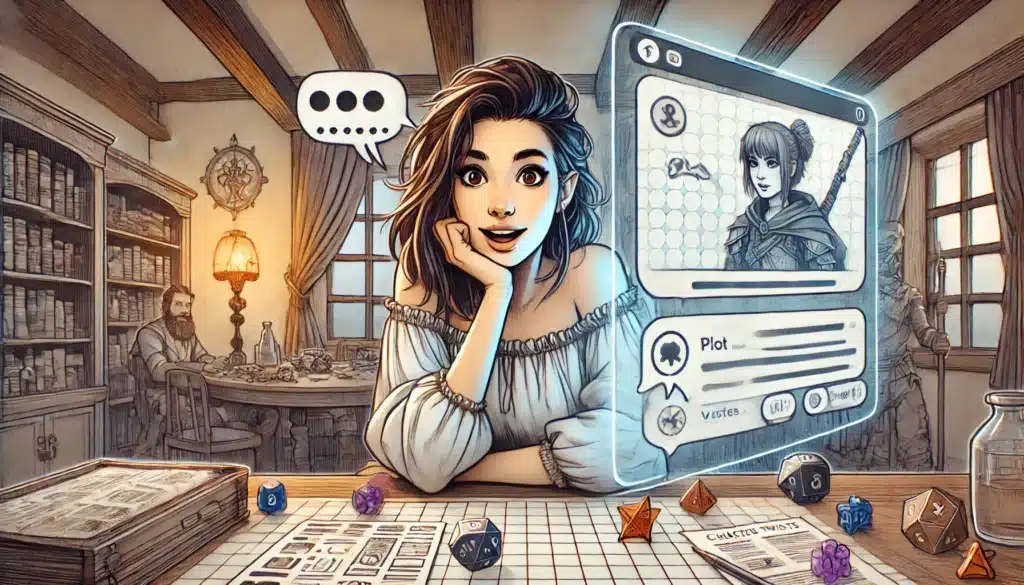
Future of Actual Play and the RPG Industry
As the curtain closes on this exploration of the actual play empire, we stand at the threshold of an ever-evolving world where storytelling and shared experiences redefine the fabric of tabletop gaming. The transformative impact of actual play is undeniable, and its continued evolution promises to influence the RPG industry in exciting and unpredictable ways.
One of the most promising developments on the horizon is the incorporation of AI tools and interactive audience participation. These innovations have the potential to make games more immersive and adaptable, offering players and viewers new ways to engage with stories. AI-powered systems could dynamically adjust narratives based on audience reactions, creating personalized experiences that keep fans at the heart of the adventure.
Transmedia expansions also offer endless possibilities for actual play content. As stories bridge different media, from animation to graphic novels and video games, the cross-pollination of ideas will enrich the RPG universe. By expanding narratives into other creative domains, actual play can capture a diverse range of audiences and introduce them to the joys of role-playing.
The future of actual play also lies in its ability to remain a cultural force, reshaping social dynamics and fostering inclusive communities. As storytellers continue to explore new narratives and push the boundaries of creativity, the genre’s potential to drive positive change and inspire new generations of gamers is immense. By embracing diverse voices and focusing on collaborative storytelling, actual play can challenge stereotypes and redefine the cultural landscape.
In closing, the actual play empire is a testament to the power of creativity, community, and storytelling to transcend boundaries and create connections. As we look to the future, the possibilities are as boundless as the imaginations of those who gather around tables and screens, rolling dice and crafting tales both epic and intimate. Whether through the exhilarating thrill of live play or the quiet reflection of character development, actual play content invites us all to become part of the story—and in doing so, transforms us into adventurers, collaborators, and creators in an ever-expanding world.

